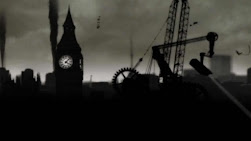On pyschogeography. Without enthusiasm.

Psychogeography is a term used to describe places in a way that acknowledges how we experience our environment does not chime with its tangible reality. Our mental maps and pictures of a place might foreground memories and histories, emphasising familiar and personal routes and landmarks and often embellishing them with myths and patterns. We are free to go as far as we want when speculating on what might lie over the metaphorical hill. Hence fantasy and science fiction, which encourage our imaginations to trespass beyond the constraints imposed by our anthropocentric ideas about reality and time. In essence, Psychogeography seeks to substitute a canvas of fragmented impressions for the simplified vision of a two-dimensional map, exploring the borderland between the real and the imagined. Frankly, I do not like the term. It seems intellectually pretentious and its self-appointed practitioners are sometimes too keen to pass off what is clearly entirely imaginary in place of stories



